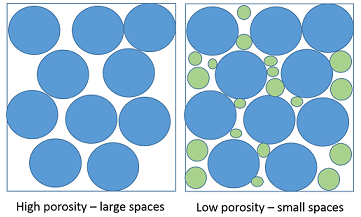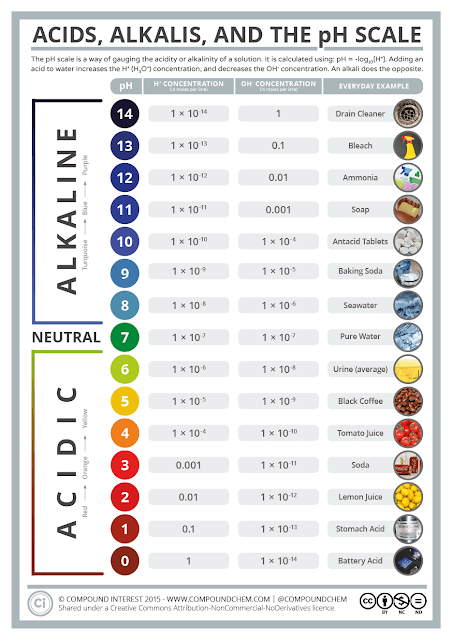Understanding the characteristics of substrates often informs the design and functionality of growing media. There are two main characteristics to focus on when it comes to substrates - physical characteristics and chemical characteristics. Physical characteristics include the soil texture, particle size distribution, and porosity. There are characteristics that cannot be changed. Chemical characteristics of substrates include potential of hydrogen (pH), and electrical conductivity (EC). The chemical characteristics are quite dynamic and are easy to change- whether naturally or through means of the grower.
Physical
Characteristics:
Once the percent of sand, silt, and clay of a soil has been determined, you can classify the texture of the soil. This can be done using the soil texture triangle. It is very simple to use- all it entails is taking the percentages of sand, silt, and clay, and then lining them up appropriately on the triangle. For example, if a mineralized soil contains 65% sand, 20% silt, and 15% clay, this soil will be classified as a Sandy Loam. It should be noted that this only works with mineralized soils. In most horticultural applications, growers tend to use what is referred to as “soilless media”, meaning the growing media lacks mineralized top soil. This particular type of growing media is made with other naturally occurring substrates, such as pine bark, Canadian sphagnum peat moss, sand, expanded clay aggregate, etc.
Whether a grower is using soil media or soilless media, particle size distribution is perhaps the most important physical characteristic of substrates and growing media. Particle size distribution is the measurement of the gradation of specific sized particles, ranging from largest to smallest. For example, we know that ½” pine bark is larger in size, therefore we expect a higher amount of large aggregates in the overall particle size distribution of the substrates; whereas Canadian sphagnum peat moss is smaller in size, resulting in particle size distribution on the smaller size. The size of these substrates will influence the functionality of growing media, which in turn will affect the growth and overall health of crops. Particle size distribution of substrates and growing media is crucial because it directly impacts porosity. When dealing with particle size distribution and porosity, it is crucial to find the perfect ratio of large particles to small particles.
Porosity is representative of the amount of pore space within a given volume. If you have substrates that are large in size you will have larger spaces, which results in high porosity; inversely, if you have substrates that are smaller, you will have smaller spaces, which results in low porosity. Once the media is established in containers or the landscape, these pores fill with either air or water. Finding in the happy medium between high porosity and low porosity is crucial for plant health.
If
you have a growing media that has
too large of particles or too high
of porosity, it will complicate air and
water exchange. The excess of large pores allows for intense drainage, which will affect the moisture retention of the crop.
If there is not enough small pores
present, water will not be able to fill in any of these pore spaces, ultimately
resulting in loss of moisture retention. Additionally,
if there are too many large pores present, it will affect the crop’s ability to
root; making it more challenging
for the crop to anchor on to anything
substantial. On the other end, if the growing media has too low of porosity,
or too many small pores, this too will complicate air and water exchange in the growing
media profile. If the pore spaces
are too small, they will be too compact. The compaction of the growing media
will result in improper drainage, leaving the crops water logged. Compaction
will also complicate air exchange in the growing profile. Without enough air
exchange, roots will become “choked off”. Too little of porosity can lead to necrosis for the crops.
Chemical
Characteristics:
Potential
of Hydrogen (pH) is the measurement of how acidic (1-6), neutral (7), of
alkaline (8-14) a solution is. Different substrates used in the horticulture
industry have varying pH
measurements. For instance, typically pine and Canadian sphagnum peat moss have lower, more acidic pHs, whereas sand and composts typically have higher, more
alkaline pHs. When dealing with
overall plant health, pH is the most important, and often most overlooked
chemical characteristic. If the
pH of the growing media is not in
the ideal range for the crops being grown, the crops may start to show signs
and symptoms of distress. This is because certain nutrients are only able to be
absorbed at very specific pH ranges; usually between 6.0-7.5. If plants are showing
any symptoms of distress, it is best to check pH fi as the first step in a
successful plant management strategy. If you’d like more information on how pH
and plant health are related, please check out the blog post pertaining to pH.
Electrical
Conductivity (EC) is the
measurement of soluable in a
solution, such as fertilizers. EC is related to the fertility of crops and is
often a good way to gauge a fertilizer regiment for plant health management. EC
levels will vary depending on the crops being grown- but have no fear, EC can,
and will often change. It is important to understand what the ideal EC range is
for your crops- if the EC levels are too low, it may affect the nutritional
value of the crops; whereas if the salt levels in crops are too high, they will
ultimately “choke” out the plant, leading to death. If EC level are too
low, fertilizer may be added to the crops to
create the targeted EC range; whereas if the EC levels are too high, leaching
can be done. It is important that growers not only understand their EC levels,
but regularly monitor them throughout growing cycles.
By
understanding the physical and chemical characteristics
of substrates and growing media, growers are able to make more informed
decisions. This knowledge can assure any and all growers that their growing
operations and their corps are a sure success! If you have any more question or would
like more information on physical and chemical characteristics, please feel
free to contact us!
- Alexis
Picture Sources:
Van Es, Harold. “Soil Health Manual Series.” Cornell University, Dec. 2016, cpb-us-e1.wpmucdn.com/blogs.cornell.edu/dist/f/5772/files/2016/12/04_CASH_SH_Series_Texture_Fact_Sheet_121916-1obbt8q.pdf.
Friedl,
Sarah. “Permeability & Porosity: Definition & Impacts on Soil &
Rocks.” Study.com, 2020,
study.com/academy/lesson/permeability-porosity-definition-impact-on-soil-rocks.html.
P.,
& N. (2015, October 18). Acids, Alkalis, and the pH Scale. Retrieved
November, 2020, from https://www.compoundchem.com/2015/07/09/ph-scale/






